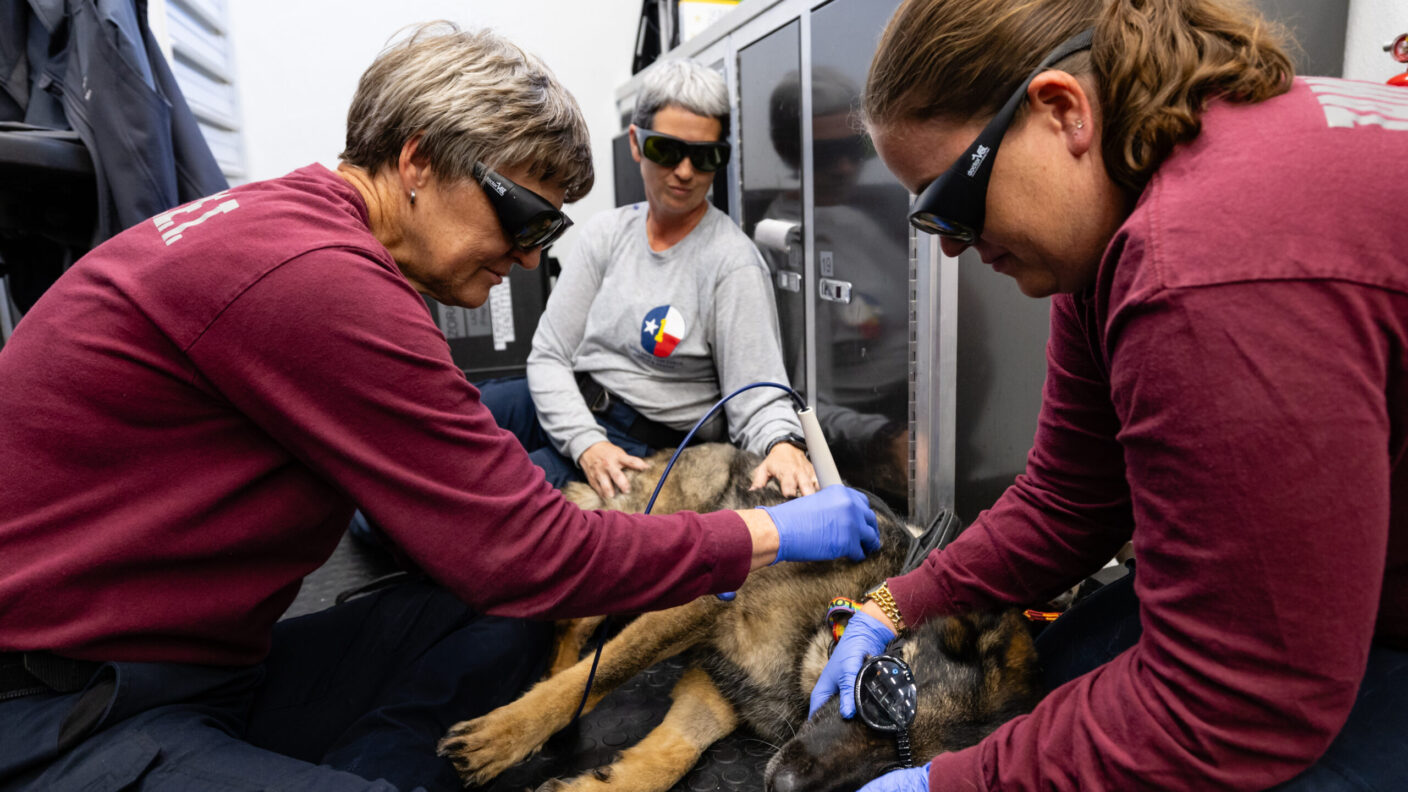Texas A&M VET Completes Mission In Central Texas Deployment
Veterinary Emergency Team treated nearly 100 search and rescue dogs during 23-day deployment to Hill Country flooding.

The Texas A&M University Veterinary Emergency Team used a medical laser to treat muscle soreness or injury in search and rescue dogs while deployed to assist the disaster response efforts following July 4 flooding in the Texas Hill Country.
The Texas A&M Veterinary Emergency Team (VET) has returned to Bryan-College Station following a 23-day deployment caring for search and rescue dogs working along the Guadalupe River.
During this time, the working dogs located all but two of the 160 people initially declared missing following July 4 flooding in the region.
Over the course of the deployment — which was initiated hours after the flash flooding occurred — 12 VET members were joined by three Texas A&M AgriLife Disaster Assessment and Recovery agents and 10 Texas A&M Doctor of Veterinary Medicine students in support of the search and rescue teams.
“Our hearts remain with everyone impacted by this tragedy,” said Dr. Deb Zoran, director of the VET. “We are grateful for the dedication of those who stepped up during this time of need and we are proud to support those working relentlessly in the search.”
The VET set up its initial base of operations at Tivy High School in Kerrville before moving to Comfort High School, a more central location within the search area, on July 12.
During that time, team members provided veterinary care for nearly 100 search and rescue dogs who played a vital role in finding missing individuals and providing some comfort and closure for their loved ones.
“Our team was focused on supporting those hardworking canines and their handlers working to find the remaining lost souls,” Zoran said. “Their work was painstaking and difficult, so we were committed to doing everything we could to keep them safe, healthy and mission-ready.”
The dogs searched through miles of rough terrain and debris piles for days, facing challenges posed by wildlife, difficult terrain, continued rain, and, due to the hot July sun the last week of the deployment, the risk of heat stress. The VET treated paw and lower leg injuries; performed physical therapy and rehabilitation with multi-modal therapies such as laser and acupuncture, when appropriate; and provided on-site decontamination stations to allow handlers to clean their dogs, gear and kennels at the end of each workday.
At the height of the response, the VET cared for more than 50 working dogs each day. These hardworking canines came not only from Texas — including Texas A&M Task Force — but also from other local, state and federal agencies.
“Knowing the VET was there and that our dogs could be transported by ambulance to the team in case of injury let us maximize their potential,” said one handler. “Each member of the VET was just as important as the handlers. I am certain if they were not there, we wouldn’t have been as successful.”
In the deployment’s final two weeks, fourth-year veterinary students from the College of Veterinary Medicine and Biomedical Sciences joined the team as part of their veterinary emergency management rotation. The participating students gained hands-on experience working in a disaster system with first responders and handling the unique needs of search and rescue canines.
“The deployment with the VET during the Guadalupe River flash flood recovery was one of the most formative and enriching experiences of my veterinary education,” said Blake Williams, a fourth-year veterinary student. “Participating in this emergency response not only enhanced my clinical knowledge about working dogs but also strengthened my understanding of the veterinarian’s critical role in disaster response, animal welfare and community support.”
